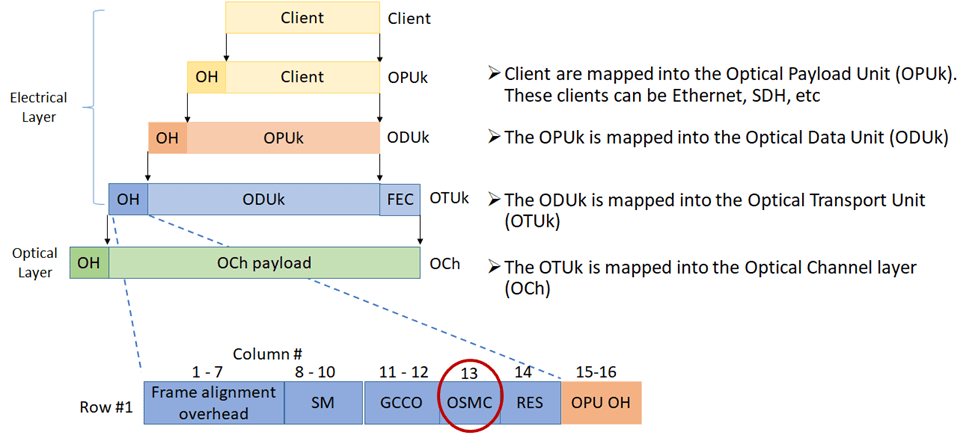IEEE Standards Association (IEEE SA) recently announced the passage of a notable amendment to the IEEE 1588TM-2019 Standard for a Precision Clock Synchronization Protocol for Networked Measurement and Control Systems.
The amendment defines the (Precision Time Protocol) PTP mapping for transport over the Optical Transport Network (OTN), which is a very common transport network technology. The PTP messages specified by IEEE 1588 standard are encapsulated with Generic Framing Procedure (GFP) instead of Ethernet or IP. The motivation for this amendment stems from a desire to provide time synchronization via optical networking.
The OTN technology is specified by the ITU Telecommunication Standardization Sector (ITU-T) and was first introduced in 2001. Like the legacy Synchronous Digital Hierarchy (SDH) technology, the OTN uses a hierarchical time division multiplexing (TDM) method to aggregate more clients into increasingly higher rate streams. This is different from the packet-based multiplexing technology used by Ethernet and IP. The OTN technology performs digital wrapping of its clients (e.g., Ethernet, SDH) in order to establish an end-to-end connection over an optical transport network.
These digital wrapping mechanisms can be used to preserve the native structure of the client data and its timing information, thus maintaining the full integrity of the original client signal. The OTN also integrates functions such as multi-level connection monitoring and maintenance signaling to monitor the end-to-end service quality.
Figure 1 shows an example of clients being transported over an OTN.

The OTN wrapper is made of several OTN containment layers as shown in Figure 2.

There are many OTN recommendations defined by ITU-T that specify all characteristics of the OTN technology and have been widely used in telecom networks. Considering the need for time synchronization in telecom networks, ITU-T Recommendations G.709, G.709.1, and G.7041 define how to transport PTP over the OTN. For example, G.709 defines an OTN Synchronization Message Channel (OSMC) for OTUk interfaces, as shown in Figure 2, to carry GFP encapsulated PTP messages.
IEEE 1588b Expands on Transportation of PTP over OTN
The new amendment IEEE 1588b refers to these ITU recommendations in a new Annex and adds a new network protocol enumeration value in Clause 7.4.1. IEEE 1588b allows applications, outside of ITU’s telecom profile, to use this new Annex when the transport of PTP over OTN is needed.
IEEE 1588b is the first published standard among a series of amendments to IEEE 1588 that aim to enhance the Best Master Clock Algorithm (BMCA) mechanisms; clarify and expand the terminology, improve the security option, specify data models, as well as enhance support for latency and asymmetry calibration.
Authors:
- Jingfei Lv, IEEE 1588 Working Group member
- Silvana Rodrigues, IEEE 1588 Working Group Secretary
- Richard Tse, IEEE 1588 Working Group member
- Geoffrey Garner, IEEE 1588 Working Group member
- Stefano Ruffini, IEEE 1588 Working Group member
- Doug Arnold, IEEE 1588 Working Group Chair
- Rodney Cummings, IEEE 1588 Working Group Vice Chair
- Maciej Lipinski, IEEE 1588 Working Group member
- Terry Jones, IEEE 1588b Working Group member








